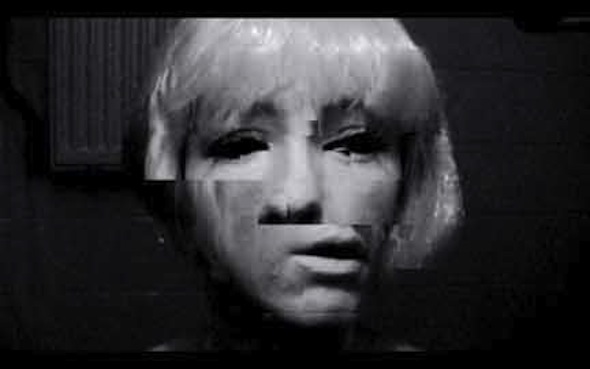 Rosa Menkman, Vernacula of File Formats, 2010, Compression Macroblocks; courtesy of the artist
Rosa Menkman, Vernacula of File Formats, 2010, Compression Macroblocks; courtesy of the artist
Rosa Menkman, Glitch Studies Manifesto
In contemporary society it’s normal to be familiar with noise. It’s not the noise of Sonic Youth or the loud sound of the streets, but the noise produced by the huge amount of information we exchange every day. With transmitting data there is sometimes a breakdown in the process that can be due to the mechanical channel or to an external factor disrupting the communication between the source and the destination.
We tend to take for granted the technology we use, often giving it a new significance that coincides with its use and its content. The notion of TV, for example, corresponds more with the action of watching than with the object itself. This insinuates that the meanings slip and crystallize over decades, assuming the limits of conventions. When a breakdown occurs in a conventionalized use of an object or technology it’s often called a mistake, or otherwise a glitch. What happens if it’s induced and applied in order to reach a specific aesthetic outcome? It becomes Glitch Art.
Glitch Art has assumed a position under the category of New Media Art and was first associated with the music world in the mid-90s. The term was rapidly extended to figurative arts and passed to describe successfully a typical way of visual expression strongly related to our digital era. In September 2010, the first conference dedicated to the theme took place in Chicago, providing an opportunity to spread a phenomenon that dates back to the 70s, along with the introduction of computers.
Glitch Art is visual noise obtained through data corruption. When a file-code has been changed, it creates indeterminate outcomes and the image appears destroyed or ruined. Once a name has been given to the induced damage in the equilibrium, the whole experience takes an artistic meaning and gains a deeper condition. The purpose is to discover a glitch and to use it to reveal the failure in a system, towards the unexpected and the uncontrolled.
If you’re interested to find out more about glitch art, LEAP’s (Lab for Electronic Arts and Performance) current exhibition ends today at 8pm and presents a selection of glitch art works that you can experience in person. The exhibition opened on Saturday, March 16th with a performance by Rosa Menkman and features Kim Asendorf, noteNdo, joe.satrom, no_carrier and others.
__________________________________________________________________________________
Additional Information
LEAP – Lab for Electronic Arts and Performance
“(Glitch) Art Genealogies”
Exhibition: Mar. 19 – Mar. 23, 2013
Opening hours: 5 – 8pm
Karl-Liebknecht-Str. 13 (click here for map)
___________________________________________________________________________________
Blog entry by Andrea Ongaro in Berlin; Saturday, Mar. 23, 2013



















